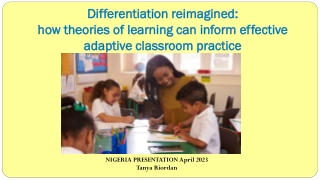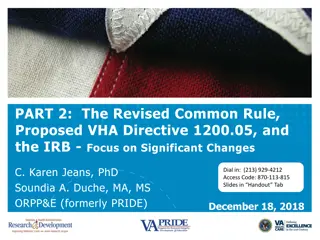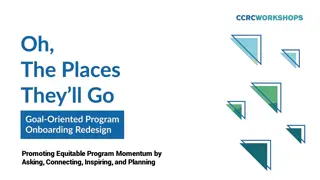
New General Education Requirements Approved by ABOR for State Universities
ABOR has approved new general education requirements for all three state universities, each with distinct programs. The completed AGEC will continue to fulfill lower-division general education requirements. Students not completing AGEC will have coursework evaluated on a course-by-course basis. The AGEC has not been significantly revised since 1991, emphasizing the importance of 21st-century skills and the unique mission of community colleges in general education requirements.
Download Presentation

Please find below an Image/Link to download the presentation.
The content on the website is provided AS IS for your information and personal use only. It may not be sold, licensed, or shared on other websites without obtaining consent from the author. If you encounter any issues during the download, it is possible that the publisher has removed the file from their server.
You are allowed to download the files provided on this website for personal or commercial use, subject to the condition that they are used lawfully. All files are the property of their respective owners.
The content on the website is provided AS IS for your information and personal use only. It may not be sold, licensed, or shared on other websites without obtaining consent from the author.
E N D
Presentation Transcript
New ABOR policy 2-210 (passed 6/2019; revised 2/2021) ABOR has now approved new general education requirements for all three state universities The general education programs of the three universities are distinct from one another All three state universities will continue to accept the completed AGEC as satisfying their lower- division general education requirements Students who do not complete the AGEC (including dual enrollment students who go straight to a university) will continue to have their coursework evaluated by the receiving university on a course-by-course basis
The AGEC has not been significantly revised since 1991 Before the Internet became publicly available Before email was common Before cell phones became widespread Before personal computers were used for more than just playing Oregon Trail 21st Century Skills are critically important Community colleges have a unique mission that should manifest in the general education requirements
1. 2. Students need to understand why they are taking a general education curriculum and how it will benefit them. Students need to clearly understand the connections between fields of knowledge and not just experience them as discreet, unrelated experiences. 3. Classes in the general education curriculum need to be more than just introductions to/recruitment for the discipline.
4. Courses that already have a good transfer history will be the foundation of the AGEC curriculum, and their learning outcomes will be expanded to clearly demonstrate the connections among disciplines. 5. 6. Courses that teach college success skills can be counted toward the AGEC. Students will acquire 21st century skills.
Only one AGEC; students choose their math and science courses based on their intended transfer major 33-35 credits total College-level integrated Reading & Writing and Technical Writing classes can now be counted toward first-year composition in addition to ENG 101 and 102 The Options category will now be replaced by two new categories: American Institutions (3 credits) Skills for a Productive Life (3 credits) Special designations will be eliminated; these learning outcomes will be added to the appropriate categories
SUMMER 2022 AGEC Redesign Subcommittee created a draft of category criteria based on the AAC&U Essential Learning Outcomes and delivered to GEATF for refinement. The Steering Committee subgroup met with members of the GEATF in Summer 2022 and decided that the drafts for criteria in each AGEC area should come from faculty. The GEATF met on August 27, 2022 to learn more about the redesign project.
FALL 2022 A subgroup of the GEATF met in early September 2022 to establish a timeline. Volunteer faculty were recruited through discipline-specific ATFs.
November 2022 Criteria drafts vetted through institutional GEATF representatives. Feedback on criteria due to GEATF representatives. Criteria feedback evaluated and criteria revised. Revisions due to GEATF. GEATF reviews and revises criteria. Present proposed criteria to the AGEC redesign subcommittee. December 1, 2022 December 2022 December 20, 2022 January 2023 February 2023
March 2, 2023 Steering Committee votes on proposed changes. April 13-14, 2023 New AGEC structure and category criteria introduced in a general session at the AZTransfer Summit. AY2023 Community college districts will align their general education offerings with new AGEC structure and category criteria. Fall 2024 New AGEC available to students starting with the Fall 2024 catalog.
The General Education Articulation Task Force (GEATF) is charged with leading statewide and institutional discussions about AGEC revisions. Community college GEATF members facilitate discussion and feedback through their institutional general education committees, faculty senate, and/or other venues. University GEATF members are encouraged to share experience via the AGEC Criteria Comment Google Form. Lead members will consolidate institutional feedback and submit via the AGEC Criteria Comment Google Form.






















